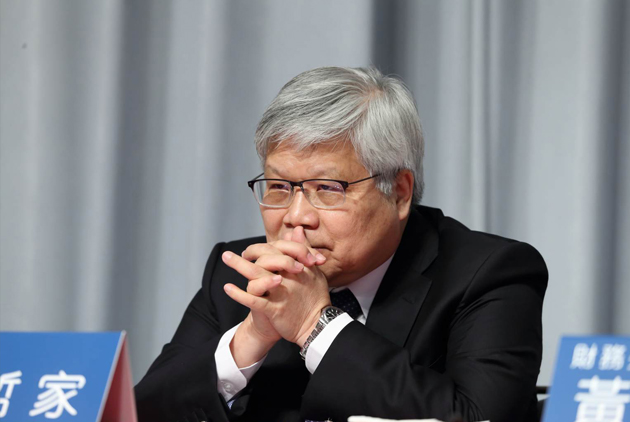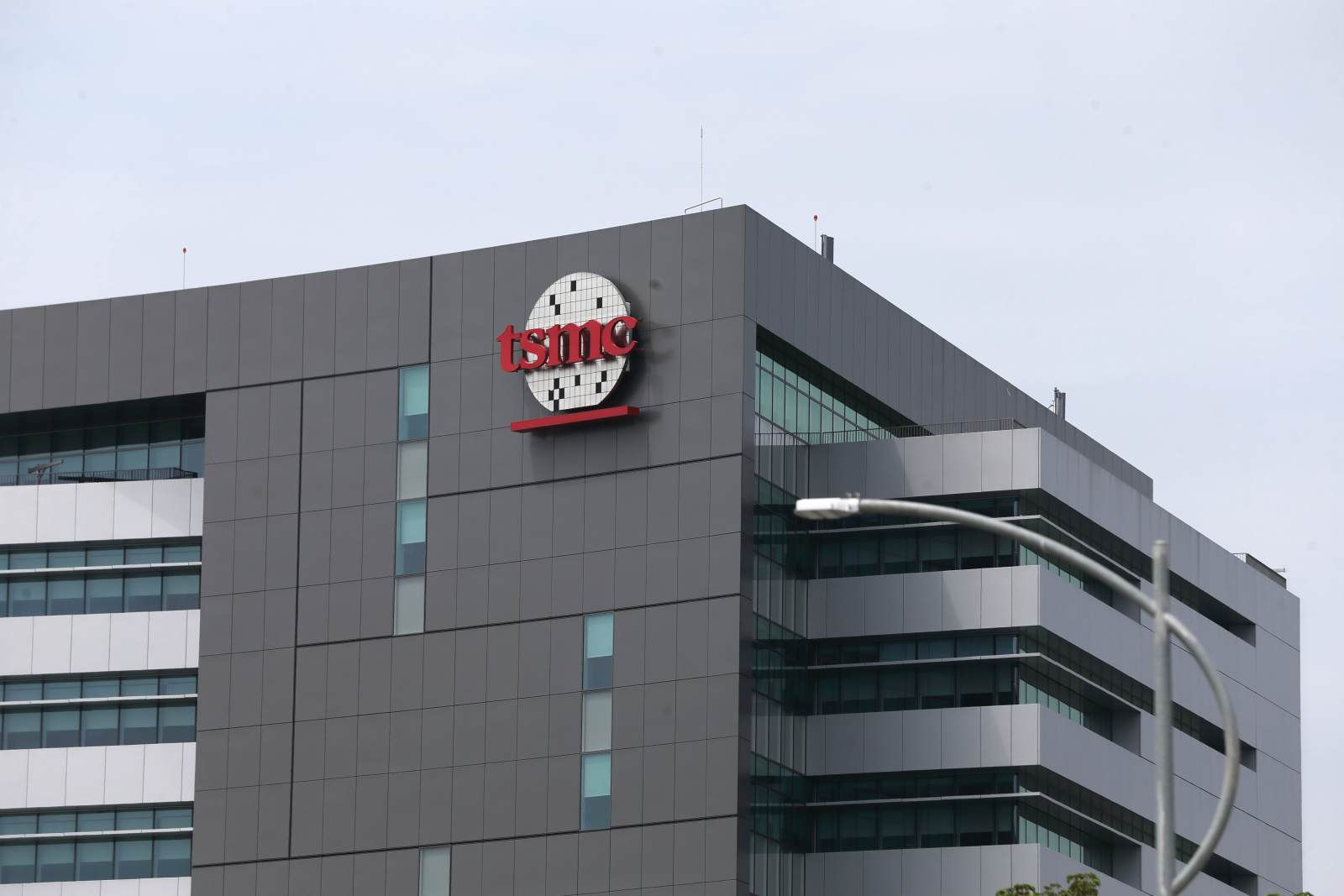What kind of trends does this herald?
TSMC capital expenditure exceeds US$30B

Source:Chien-Tong Wang
TSMC adjusted its capital expenditure for this year to US$30 billion, or more than the total (local Taiwanese) government investment for this year. The company has earmarked expenditures of US$100 billion over the next three years. What does TSMC see that others do not? What is the current progress report for the U.S. facility, and how can Intel and TSMC develop a relationship that is both cooperative and competitive?
Views
TSMC capital expenditure exceeds US$30B
By Hannah ChangFrom CommonWealth Magazine (vol. 721 )
During its first quarter 2021 shareholders meeting on April 15, Taiwan Semiconductor Corporation (TSMC) announced that it would adjust its capital expenditure for this year upwards to US$30 billion. Not only is this figure higher than the previous 20 percent increase from US$25 billion to US$28 billion, it represents a steep 74 percent rise over last year, setting a historic high. In addition, this year’s revenue forecast has been adjusted upwards by 20 percent.
“We predict that production capacity will be pinched through 2022, and customers are asking to increase inventory,” said a confident C.C. Wei, TSMC president and co-CEO.
Wei noted that customers have unleashed more robust demand for 5nm and 3nm process chips, currently production capacity cannot keep up with demand, and there is a chip shortage. Thus the company must raise its capital expenditure.
Wei related that TSMC has been in close discussions with customers over the past three months, and that “demand for nearly all production processes has increased,” especially 5nm and 3nm.
Key #1: Why expand capital expenditure?
Massive 3-year US$100B investment, increased demand for all processes
“As a leading vendor in advanced processes, TSMC is taking a bullish approach to the long-term growth trend of HPC, digital transformation, 5G smartphones, and autotronics, which is why we have a three-year US$100 billion expenditure plan,” C.C. Wei explained, adding that this year’s US$30 billion is included in that US$100 billion figure, and that production capacity can be expected to remain tight throughout this year.
Why is TSMC investing US$100 billion over three years to raise production capacity?
Wei said that these capital expenditures can support the manufacturing and development of leading and special processes, to help TSMC maintain 10 to 15 percent revenue growth over the next five years. “Once again, I stress that our investment in future production capacity is because our plan for the next three years was formulated after intensive cooperation with our customers, and the fundamentals reflect that the digital transformation trend is accelerating.”
Annual capital expenditure for 2021 has climbed from the previous year’s US$28 billion to US$30 billion. The company relates that approximately 80 percent of this year’s capital expenditure is being applied to 3nm, 5nm, and 7nm advanced processes; 10 percent is going to advanced packaging and reticle production; and 10 percent is used for special processes.
“Compared to three months ago, demand for nearly all production processes has grown,” asserted Wei.
Key #2: Which application demands are strongest?
Smartphones, HPC demands robust, autotronics chips still in short supply
One shareholder asked which applications have raised the demand on production capacity of 5nm and 3nm advanced processes, prompting TSMC to boost capital expenditure.
TSMC noted that 5nm processes accounted for 14 percent of company revenue in the first quarter, and 7nm for 35 percent, for a combined 49 percent. Under the robust demand for smartphone- and HPC-related applications, the demand for 5nm is expected to keep growing over the next several years.
During the shareholders meeting, C.C. Wei also especially noted the current shortage of autotronics chips. Wei noted that the automotive industry supply chain took a hit from the coronavirus pandemic last year, and although TSMC customers reduced demand in the third quarter of last year, there was a surge in the industry in the fourth quarter.
C.C. Wei took pains to explain the challenges brought by the automotive electronics shortage, noting that the auto industry supply chain employs a long, complicated inventory management approach, which requires at least six months from chip production to car manufacturing, and going through multiple layers of suppliers in the process.
Despite announcing that it would place top priority on “supporting autotronics customers’ needs for production capacity” in January, such unexpected circumstances as the Texas cold snap and Japanese fab production halt have contributed to the continued worsening of the auto chip production shortage.
Key #3: How to balance out regional politics?
US investments, as well as Nanjing expansion plans
During a recent White House visit, TSMC executive chairman Mark Liu stressed that the 5nm process production facility near Phoenix, Arizona will be the largest direct foreign investment in American history. This led shareholders to ask if TSMC would increase U.S. investment, as well as the status of the company’s manufacturing facility in Nanjing, China. Is expanding production in Taiwan still a priority for TSMC?
Wei responded, saying that TSMC is delighted to make a contribution to U.S. semiconductor manufacturing with its investment in the 5nm wafer fab in Arizona. However, he stressed that TSMC is a multinational company, with manufacturing facilities in Taiwan, China, Singapore, and the United States, and that Taiwan remains the company’s core base.
As for the Nanjing facility, Wei noted that the company plans to expand production capacity there.

Key #4: Rival Intel has expanded investment?
Intel is an important cooperative customer as well as a competitor
However, rival Intel recently announced plans to invest US$20 billion in two new wafer fabs in Arizona, planning to expand wafer contract manufacturing. One foreign investment analyst posed a question regarding competition from Intel.
C.C. Wei responded, saying, “Intel is an important customer. We cooperate in certain areas, and we also compete in some.”
Elaborating, Wei said that TSMC’s approach is to keep gaining technical ground and earning customers’ trust. And this is why it must prepare in advance to increase capital expenditure.
Key #5: Future outlook
Revenue growth forecast revised to 20%, production tight next year
TSMC recorded consolidated revenue of NT$362.41 billion, with net profit after tax climbing to NT$139.69 billion, for a 19.4 percent increase, with earnings per share (EPS) of NT$5.39.
Looking at the market ahead, TSMC predicts that the 2021 semiconductor market (not including memory) will grow around 12 percent, while the chip production industry will see year-on-year growth of approximately 16 percent.
However, TSMC is confident that it can outpace the growth rate of the chip manufacturing industry. Calculated in U.S. dollars, it predicts around 20 percent growth for 2021, better than the originally predicted 15 percent.
The final shareholder question was: “Recently we’ve heard about the overbooking of mature technology processes. Aren’t you worried about oversupply? Is there data to prove that demand really exceeds supply?”
“That possibility cannot be discounted,” said C.C. Wei. “We predict continued tight production capacity this year and next year, with some relief finally coming in 2023,” he added.
Have you read?
♦ Can Taiwan quench TSMC’s thirst for water?
♦ The coming TSMC boom: Can it double sales by 2023?
♦ In Search of the Next TSMC
Translated by David Toman
Edited by TC Lin
Uploaded by Penny Chiang






